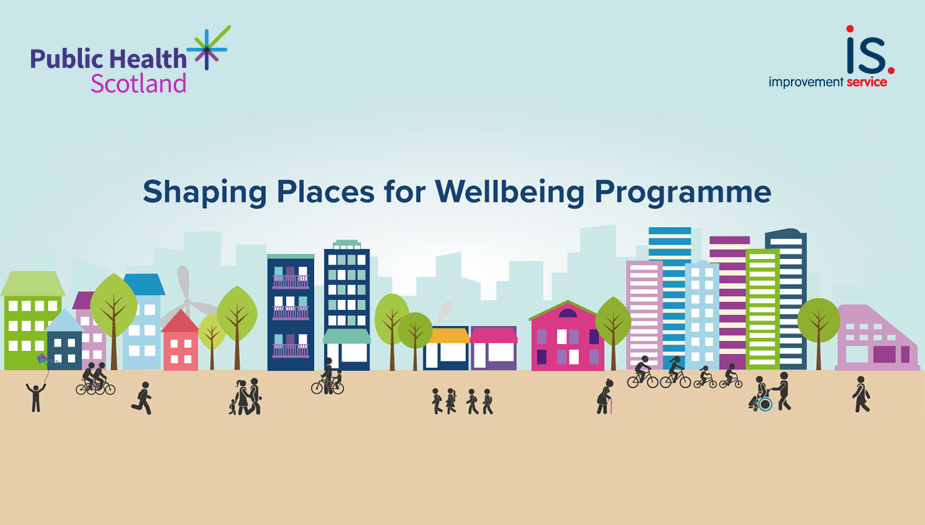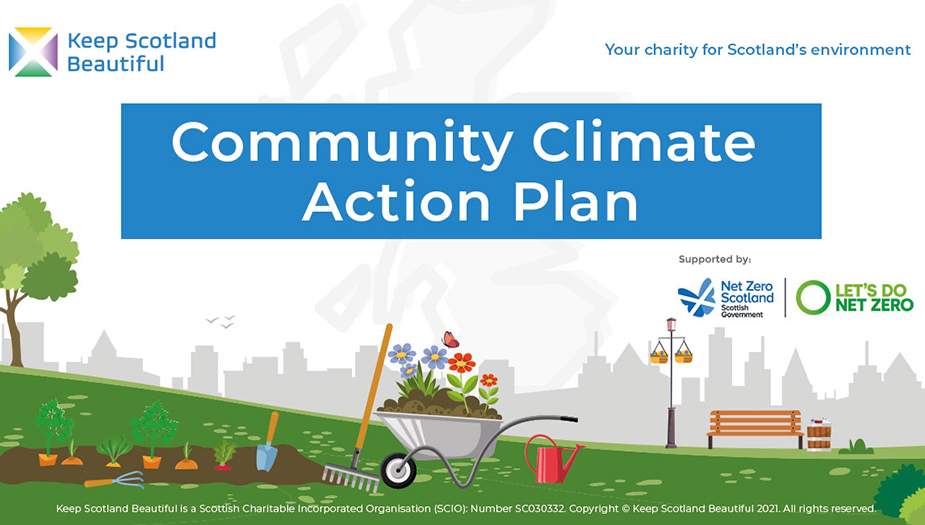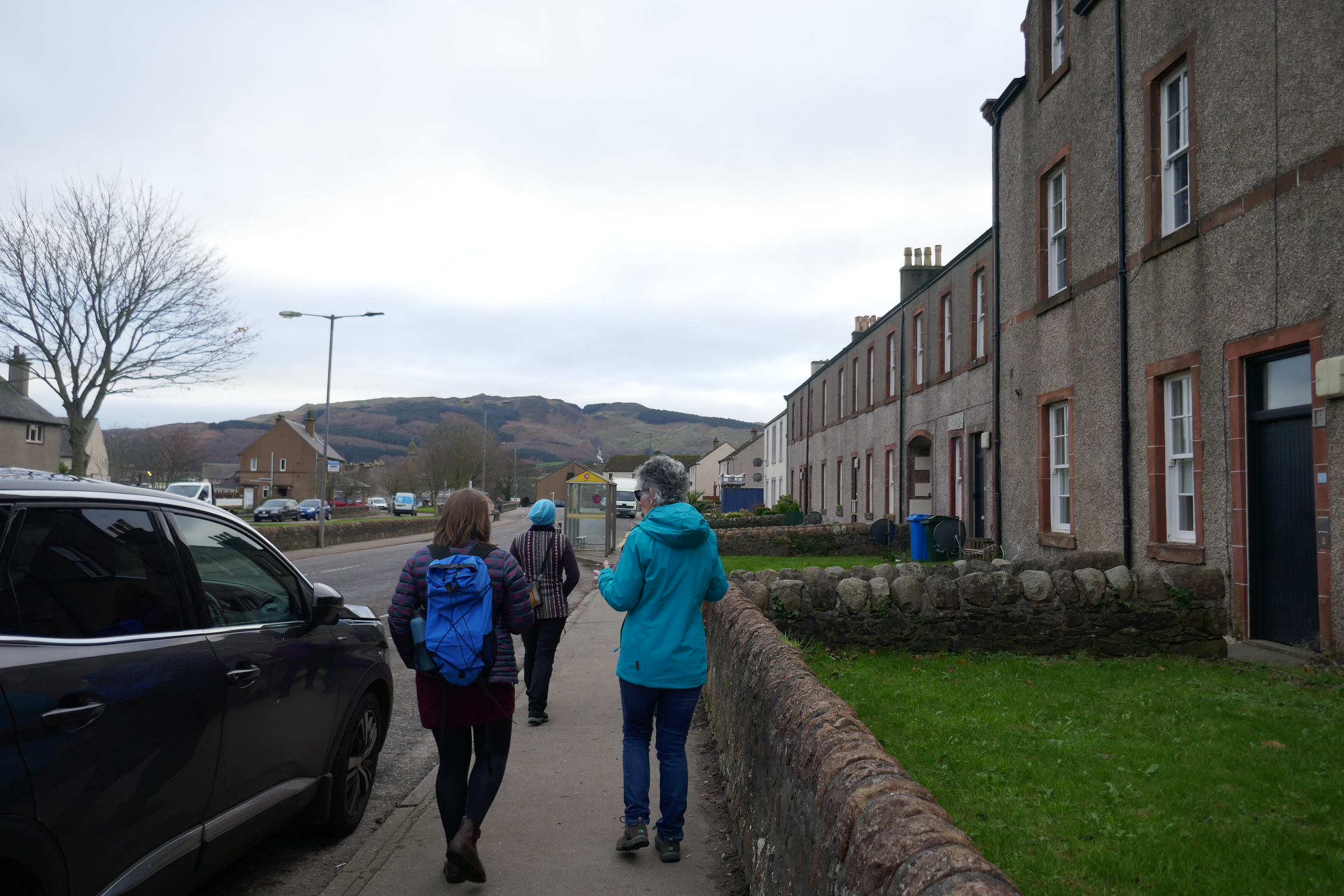Shaping places for wellbeing

As part of Climate Week 2022, we ran an event on Designing for a Changing Climate. We asked the speakers to write a short blog about their presentation. In this blog, Susan Rintoul, Shaping Places for Wellbeing Project Officer, at Improvement Service, shares her thoughts.
Scotland is facing a cost of living crisis, the worst health inequalities in Europe and alongside the rest of the world a climate crisis. These are three huge challenges we need to consider when shaping the places where we live, work and relax.
Impact of interventions
Our places can positively or negatively impact our wellbeing, negative impacts can happen as the result of unintended consequences of an intervention meant with good intentions. It is important to consider the impacts of interventions to adapt and mitigate climate change have on health and inequalities.
The Shaping Places for Wellbeing Programme aims to support the work our partners are currently doing to support decision makers to consider ‘place’ in a comprehensive and consistent way.
Our programme is centred on the Place and Wellbeing Outcomes, which provide this clarity. The outcomes are the evidenced features every place needs in order for those living, working and relaxing there to thrive.
Shaping places for wellbeing
Delivering them also enhances action on sustainability and net zero. The objective of the programme is to support those making decisions that will influence a place, to consider the consequences of those decisions on each of the outcomes and how that will in turn impact the wellbeing of our people and our planet.
The Shaping Places for Wellbeing programme is split into three activities:
- Local project towns
- Local learning cohort
- National leadership cohort
Our Local Project Towns offers support to existing work already happening in the towns and each town is supported by a Project Lead and a Community Link Lead. In each town we are reviewing the data on who is being impacted by poorer health and wellbeing and reviewing the current ambitions of strategy, policy and actions impacting the town.
These will be used as a ‘lens’ to assess how place can contribute to the future ambitions and collaborative action in our towns. The programme will support people to work with other departments and/ or organisations that they might not have recognised share similar ambitions and work towards a whole-systems approach.
Place and wellbeing assessments
In each of our towns we will be undertaking Place and Wellbeing Assessments of strategies, plans, major investments or projects identified by the Steering Group as looking to consider the contribution of a place-based approach. The Assessment involves bringing together people with a range of expertise and perspectives to consider how a plan, policy or decision will impact on delivering a place that enables wellbeing.
We recently undertook an assessment of the draft Clackmannanshire Interim Climate Change Strategy and a participant highlighted that “it enriched the content (of the plan) and gave us new ideas and added value”
The Local Learning Cohort brings together each of our towns to share learning with each other and our National Leadership Cohort bridges the gap between local learning and national partners. This space allows for any national barriers affecting the local activity to be considered and for learning to be shared.
Shaping places for wellbeing
The Shaping Places for Wellbeing Programme is a delivery partnership between the Improvement Service and Public Health Scotland (PHS), funded and supported by The Health Foundation and Scottish Government with support from COSLA. You can read more about their programme here.

Delivering community climate action plans in Scotland
Written by Heather Ashworth, Projects Officer with the communities team at Keep Scotland Beautiful, this article reflects on their conversation during our Climate Week 2022 event on Designing for a changing climate.

How we work to tackle the climate emergency
In this blog, we share examples of work we have been doing in Architecture and Design Scotland that aims to tackle the climate emergency across a number of scales.
